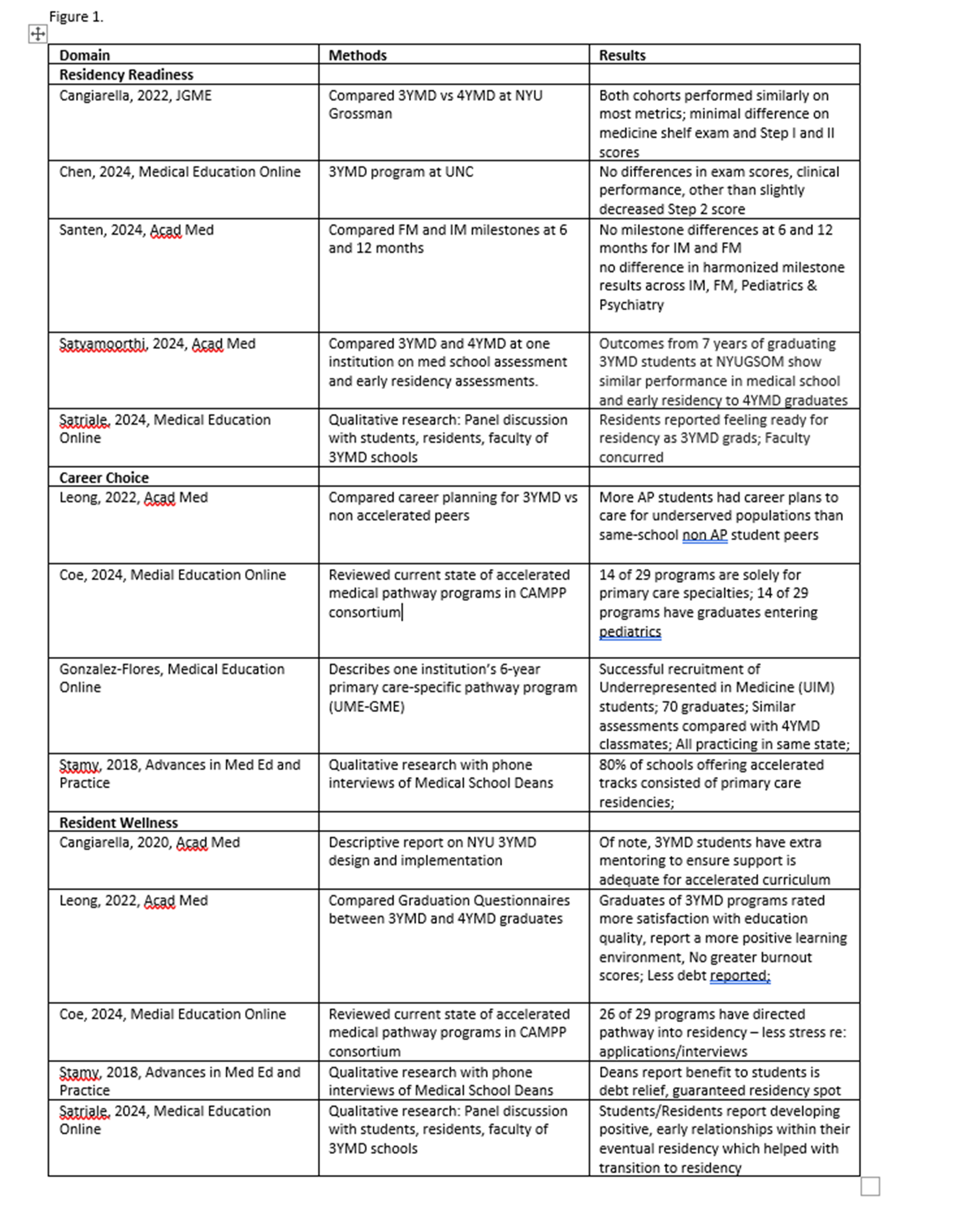Medical Education 11: Innovations across the continuum
Session: Medical Education 11: Innovations across the continuum
252 - Addressing the Pediatric Work Force Dilemma With Accelerated Medical Pathway Programs: A review of UME-GME collaboration successes
Monday, April 28, 2025
7:00am - 9:15am HST
Publication Number: 252.3776
Mark A. Vining, UMass Chan Medical School, Worcester, MA, United States; Lisa Strano-Paul, Renaissance School of Medicine at Stony Brook University, stony brook, NY, United States; Robyn J. Blair, Stony Brook Children's Hospital, Stony Brook, NY, United States

Mark A. Vining, MD (he/him/his)
Pediatrician
UMass Chan Medical School
Worcester, Massachusetts, United States
Presenting Author(s)
Background: The 2024 Match revealed a the continued decline in pediatrics program fill rates, with a record low of 92%. Student debt vs. anticipated future salary is thought to be a key driver in this trend. Currently, about 20% of medical schools have accelerated graduation tracks, most with a directed pathway into residency. Addressing work force shortages and reducing student debt are key missions for many programs. An increasing body of evidence reports on the success of these programs in meeting these missions. We present the most recent data demonstrating institutions with UME-GME partnerships through such accelerated pathways can be one successful recruitment and retention strategy.
Objective: To describe how accelerated medical pathway programs can be a successful recruitment strategy for Pediatric Residency Programs, such that interested educational leaders can advocate for their development in their own institution
Design/Methods: We reviewed the literature and summarized in table form the evidence of success for current accelerated pathway programs in the following domains: Evidence of readiness for residency, Evidence for attracting students to primary care careers, Evidence for resident wellness and satisfaction
Results: We performed a literature review of relevant articles from the last ten years.
15 published studies were reviewed. Most were published within the last 3 years. Evidence exists in 5 identified papers that document similar performance on assessment metrics, including Shelf exams, USMLE exams, and milestone evaluations (“Resident Readiness”). Four papers report students in these accelerated programs plan, or are currently practicing, in careers caring for underserved populations, and about half of programs recruit specifically for primary care fields (“Career Choice”). Half of programs have graduates in Pediatrics. Five papers describe personal accounts and/or objective information (less debt, e.g.) supporting “Residency Wellness”. QR code with links to reviewed articles will be available at presentation.
Conclusion(s): We provide evidence from the current literature that supports the success of accelerated medical pathway programs in producing graduates that are well equipped to succeed in residency. Most programs provide guaranteed positions in their home institution residency program(s), making such programs an attractive recruitment and retention strategy. Educational leaders from both Undergraduate Medical Education (UME) and Graduate Medical Education (GME) should consider advocating for accelerated pathway program development at their institutions.
Figure 1


